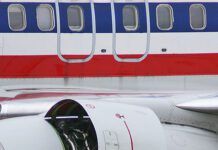Why hasnt some simulation enthusiast created a simulator to teach a child how to ride a two-wheeled bicycle? Imagine all the advantages of a simulator like that. You could teach in any weather, day or night, with no more skinned knees or jogging to keep up as they figure it out. And just think of the fun of using the instructors panel to throw in a blown tire now and then: OK, porkchop. What are your memory items?
The reason it hasnt been done is the same reason there isnt a helicopter simulator under a million bucks worth buying, and part of the reason we keep having the same tired argument about whether motion is important to simulation: Motion is hard to do well-and motion is essential to doing it right.
Humor me with the bicycle simulator a bit longer. Developing anything more than a game or traffic-safety trainer would have a cost/benefit or return-on-investment that only a government agency could love. The barrier is simply that a simulator that could help ditch the training wheels would require precise motion beyond what visuals alone could represent. You dont balance a bicycle by seeing that you are falling; you balance it by feeling that you are falling.
Learning to ride means making subtle turning motions to keep the bike underneath you; when the bike falls to the left, you turn slightly left, which puts the bike back underneath. Once learned, you do this unconsciously and almost invisibly. Any training device using only visuals would be useless, perhaps even detrimental. By that time you saw you were falling, it would be too late.
Yet learning to ride a bike works because our brains collect all the cues that might be valuable. We watch, feel and listen; integrating whatever information helps us succeed. The brain is lazy-in a good way. Unconscious response to cues frees up the conscious mind for more important tasks. This is millions of years of evolution at work. Integrating physical cues happens whether we want it to or not.
But wait, you say, In real aircraft, you cant trust your vestibular system for control. Thats why a visible horizon or instruments are required.
I agree-but this statement completely misses the lesson of bicycle riding. In the airplane, subtle cues alert us to aircraft motion long before its detectable on the instruments, or perhaps even the horizon. We learn to respond to the physical cue and look for the correction needed. We learn the feel of that correction being applied.
This inner control loop of responding to accelerations occurs in full-motion simulators and aircraft, but not in fixed simulators. Its not that fixed simulators teach incorrectly, so much as they teach incompletely. When it comes time for primary pilots to transition to a real aircraft, those with motion experience have an undeniable advantage; theyve already integrated cues of motion.
The importance of motion for flight training becomes more obvious when we look at helicopters. The bicycle simulator would be for an inherently stable vehicle with only one axis of motion (roll). The helicopter needs roll, pitch, and yaw (like an airplane), but also heave, which is a straight up and down motion. And it must combine them in any combination. And the helicopter is dynamically unstable to boot. Its like standing on a basketball. Perhaps while bouncing.
Thats the reason no helicopter simulators under a million dollars are worth buying. The three most difficult, dangerous, and time-consuming maneuvers in a helicopter are hovering, ground-reference work, and auto-rotations. All three require motion just as much as a bicycle simulator would because by the time you see the problem, its too late.
To be worth the money, helicopter simulators also need superior visuals and control loading in the cyclic. The sub-one-million dollar helicopter simulators lack these as well. The common visual projection systems get so distorted at the edges that its impossible to judge how close the skids are to the ground. A cyclic without control loading tells the pilot nothing about the condition of the aircraft or the unseen aerodynamic forces working on it.
Once the helicopter is well into forward flight, it performs largely like an airplane. Its no surprise fixed simulators handle the task equally well as they do for airplanes, which is to say incompletely.
The FAAs Human Factors Division and the Department of Transportations RITA websites host, among other things, nearly every study ever done by Universities and Governments over the last 40 or 50 years regarding the value, or lack thereof, of motion in simulation. Pick a side on this argument and youll find seven studies here to support your point of view.
For example, one of the dozens of studies that support motions importance was done by Delft University of Technology for the American Institute of Aeronautics and Astronautics (AIAA) entitled, Visual-Vestibular Interaction in Pilot’s Perception of Aircraft or Simulator Motion. The authors reviewed research done by them and others watching pilot response to maneuvers and turbulence, specifically watching peripheral visual and vestibular motion perception in tasks that require inner-loop stabilization. They concluded that peripheral visual and cockpit motion cues are of paramount importance in actual or simulated manual aircraft control.
Another study for the Journal of Aircraft entitled, “Response of Airline Pilots to Variations in Flight Simulator Motion Algorithms,” stated: “… it was found that there was a definite positive effect on how the pilots perceived the simulation environment when motion was present and there was almost unanimous dislike for the simulation environment that lacked motion. The authors also concluded that, Motion is more realistic, thus more iterative and more stimulating.” Simulation, like theater, is an exercise in the suspension of disbelief. In order for it to work, the pilot (audience) must be given just enough reality to be fully engaged in the training, and motion promotes that engagement.
Now, I could be accused of cherry picking studies here, just as weve seen from companies that dont offer motion with their simulators and commentators seeking validation of personal biases. Yet what none of these studies, pro or con, have looked at is motions impact on training in small aircraft and-most importantly-in primary training. This is exactly the basis of studies underway at the Skyport laboratory in San Marcos, Texas. The good news is that evidence in favor of motion comes in all three flavors: physical, testimonial, and circumstantial.
When the Skyport laboratory went into full operation in January of 2012, the list of experiments that it immediately undertook were based, primarily, on the data collected as part of an exhaustive 2011 study commissioned by AOPA. It provided a baseline of costs for training, student retention, hours to completion, and dozens of other valuable statistics on the challenges of flight training in the U.S.
The terrible statistics on student retention are well known, but less well known is the amount of money the average student is spending toward a private pilot certificate or the numbers hours in the logbook. The numbers were so surprisingly large, understanding the impact of an experimental simulator-centric, proficiency based curriculum felt more like a public service than an experiment.
The Skyport trained students (laboratory subjects) to proficiency in a wide range of flight maneuvers in a full-motion simulator, measuring the time to proficiency when transitioning to the airplane. The study mixed maneuvers logically suited to benefit from motion cues, such as steep turns, stalls or crosswind landings, and those not normally associated with motion cues, like instrument approaches or holding heading and altitude.
The preliminary results of those studies were released at last fall’s Migration Flight Training Industry and Design Conference with more data to be released at this coming falls conference. Two of the most notable findings were, first, that time to proficiency dropped all tasks. Interestingly, seeing time to proficiency decrease for an ILS or other non-motion maneuvers required adding turbulence to the simulation. While the total training time of motion simulator and airplane combined did not drop, the time in the airplane was cut in half. The result was dropping the cost of a Private Pilot certificate by about $4000.
That savings would be even more significant if we were training in helicopters. I learned to fly helicopters in a Schweizer 300C at a whopping $360 per hour. Im not the most coordinated human being on the planet, but Im not Joe Cocker either. It still took three excruciating days and about eight hours on the Hobbs meter to hold the Schweizer in a sort-of hover.
That hover cost $2880 plus instructor time. What if we could train a pilot to hover in a simulator in eight hours, and then transition to the helicopter in only four hours? The cost to the hover now drops to $1880 in a 300C. Make that a serious helicopter that might cost $800 per hour and were talking thousands in savings.
But thats only if the sim had the right motion cuing, visuals and control loading, and didnt cost millions. We know of a new helicopter sim with all three requirements in development thats expected to sell for less than $150,000 in the U.S. When it starts testing this fall, well see if it has the same impact our motion sims did on reducing time to proficiency, and the associated cost.
The last factor in favor of simulation has nothing to do with time-to-proficiency or motions integral role in interpreting the flying environment. It comes under the heading of Circumstantial.
A couple of years after Redbird started shipping its FMX full-motion simulator, the bestselling simulator in history since the Link trainer, we noticed a phenomenon later dubbed the Redbird Effect. At airports with multiple flight schools, soon after one flight school purchased a full-motion simulator, some or all of the other schools will order their own. The reason is simple: In competitive situations a motion simulator bestows a competitive advantage.
As evidenced above, the simulator can reduce training costs and better prepare pilots for the multi-sensory world of the cockpit. These students talk and word gets around. But motion is also just cool. Its what the consumer (student) wants, and whos to say theyre wrong? So, trot out your fat logbook and your hand-picked studies and tell them that motion doesnt matter and see what they say.
Students pay obscene amounts of money for a pilots license today. They deserve the best, most effective technology we can give them. They deserve the one that most completely prepares them for the cockpit, delivers the most for the money and that reinforces the sheer cool factor of learning to fly. They deserve something that makes the skill of flying an unforgettable, permanent part of who they are.
You know, like learning to ride a bike.
Jerry Gregoire is CEO of Redbird Flight Simulations. Don’t expect this is the last you’ll hear from him.
Join the conversation. Read others’ comments and add your own.


































